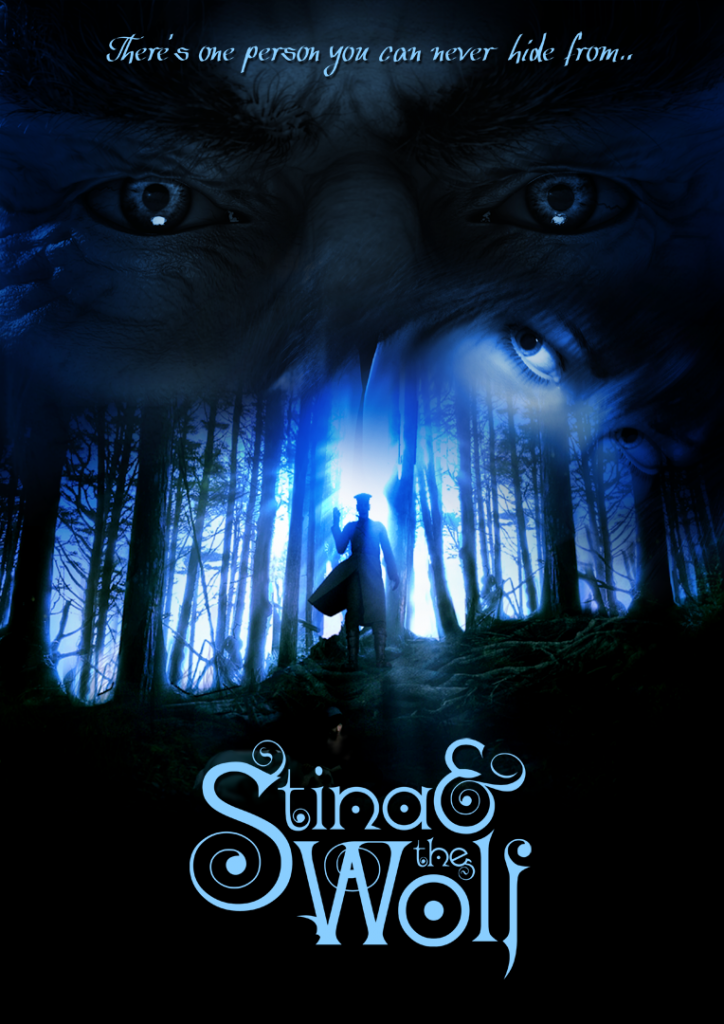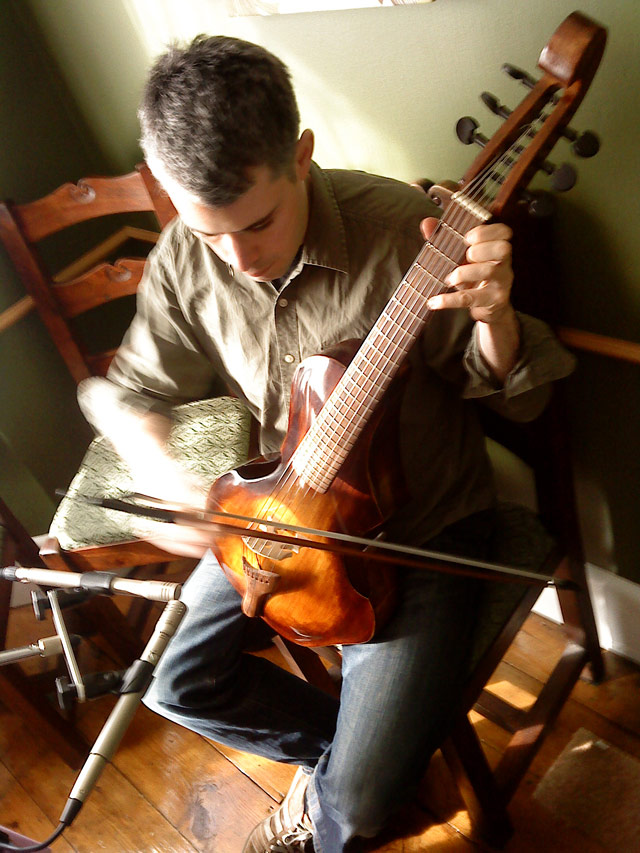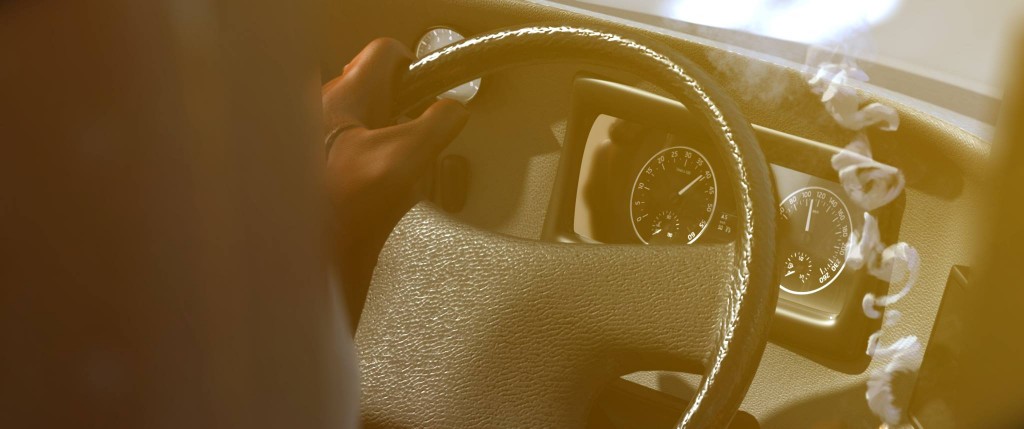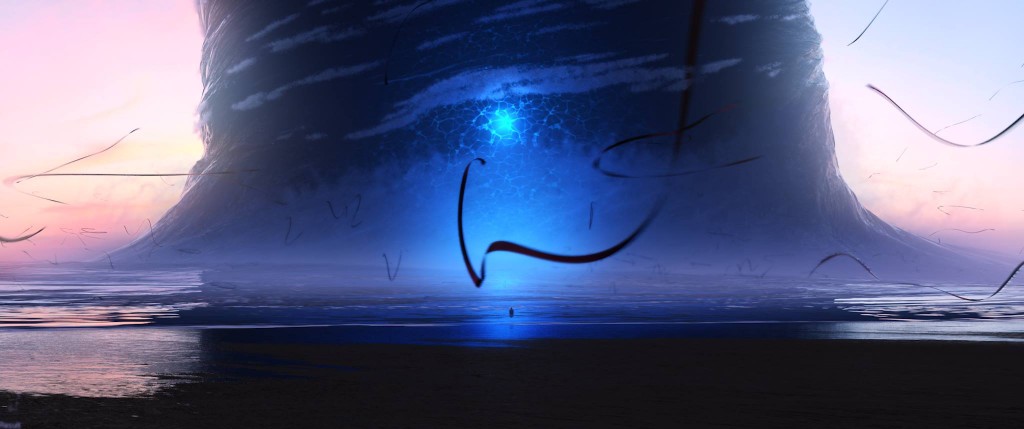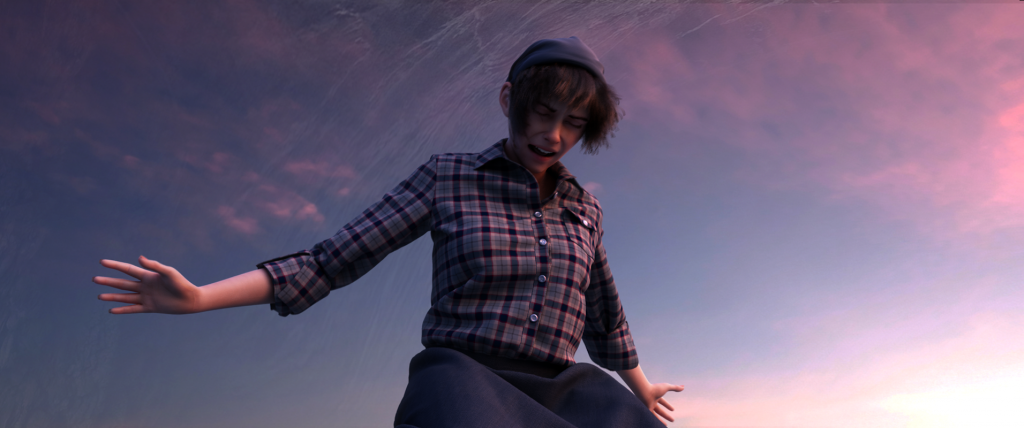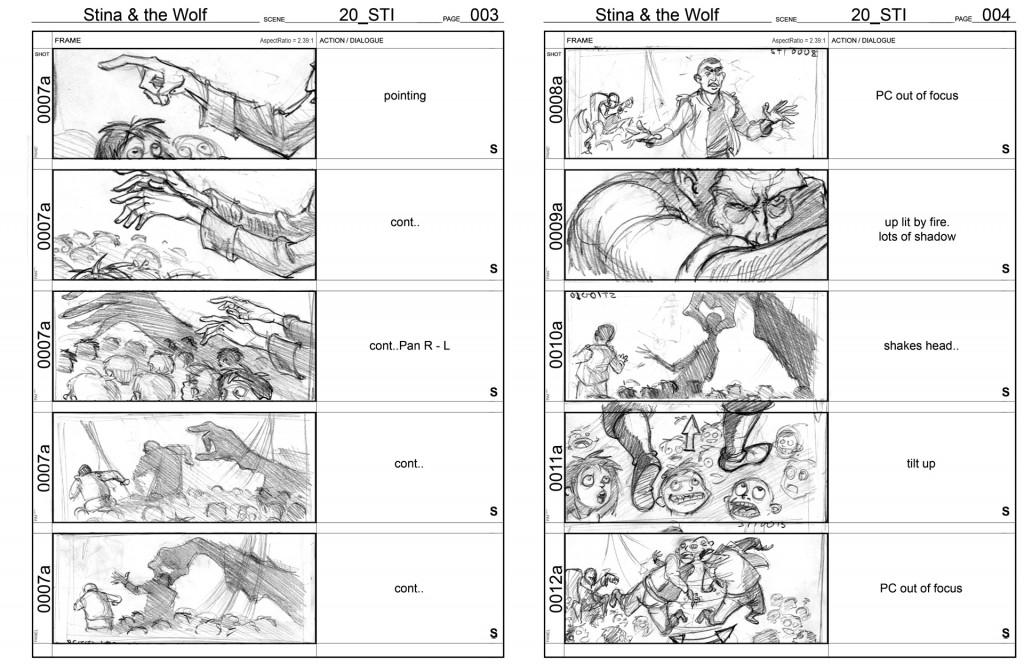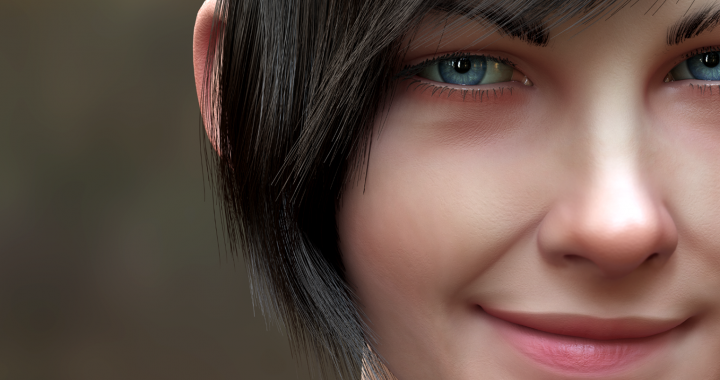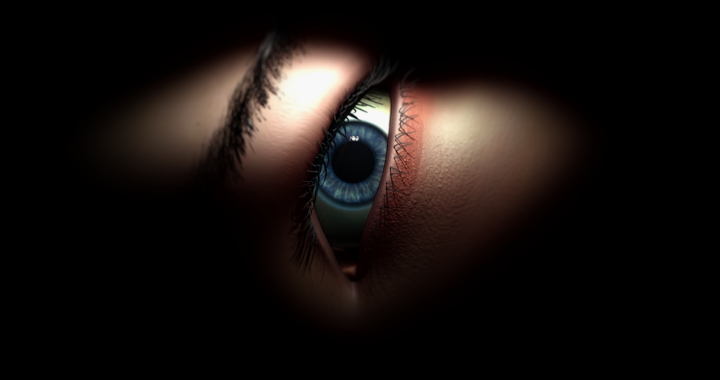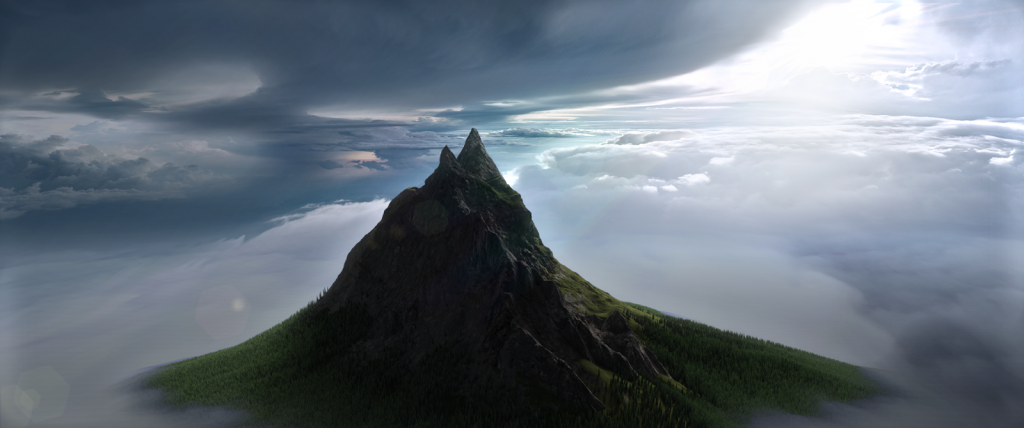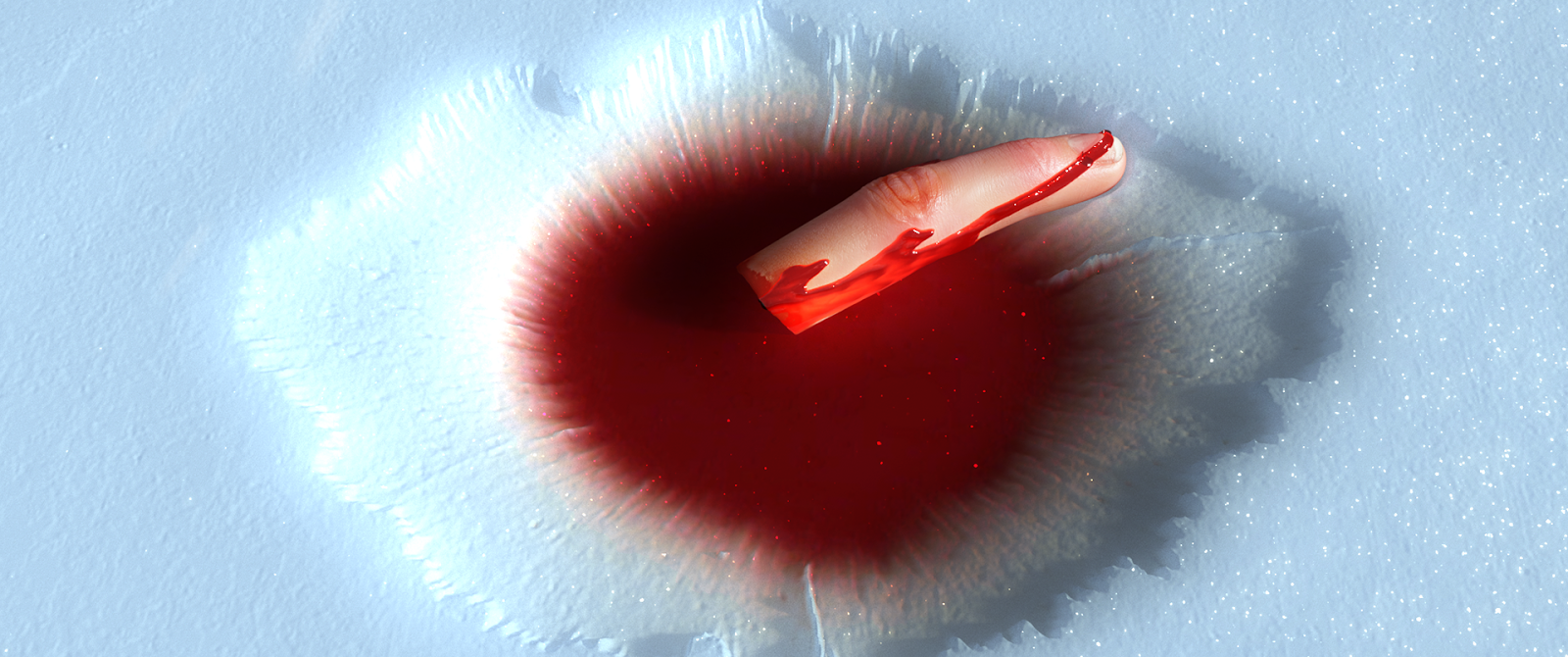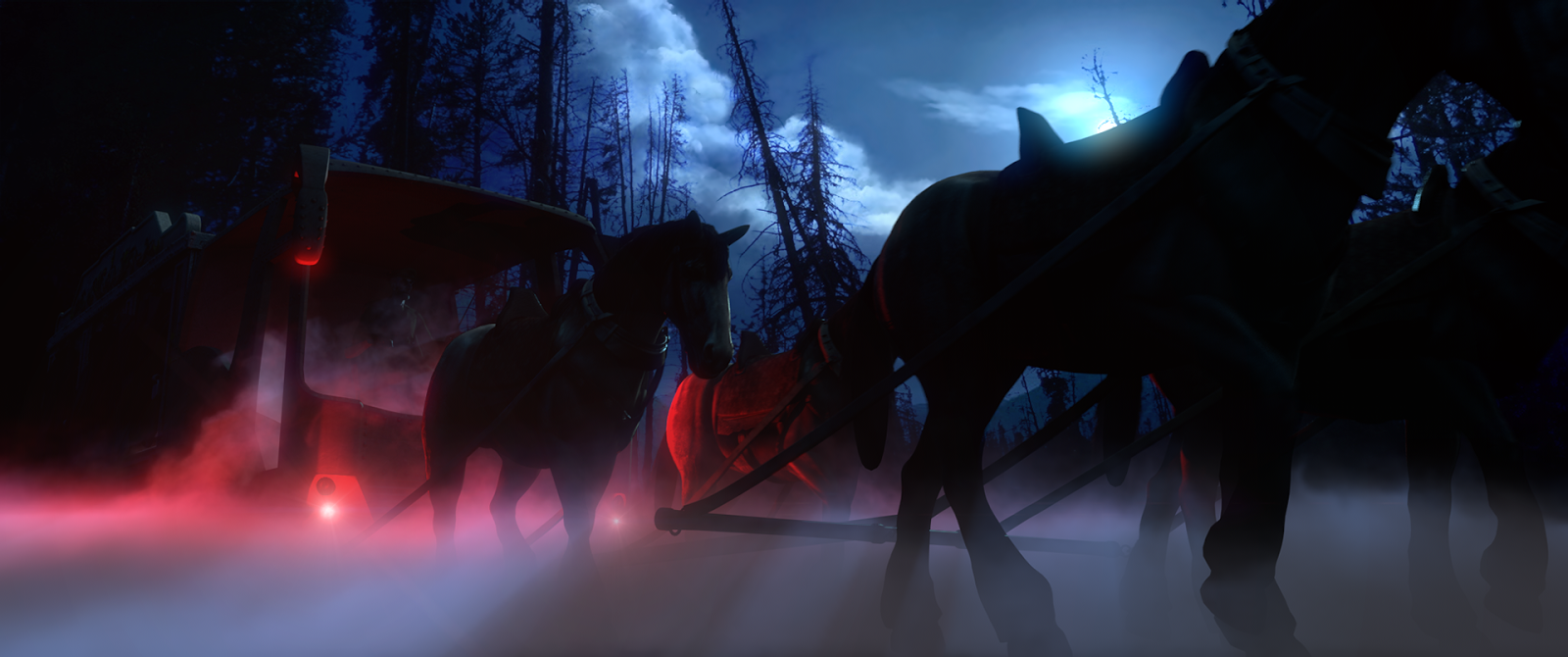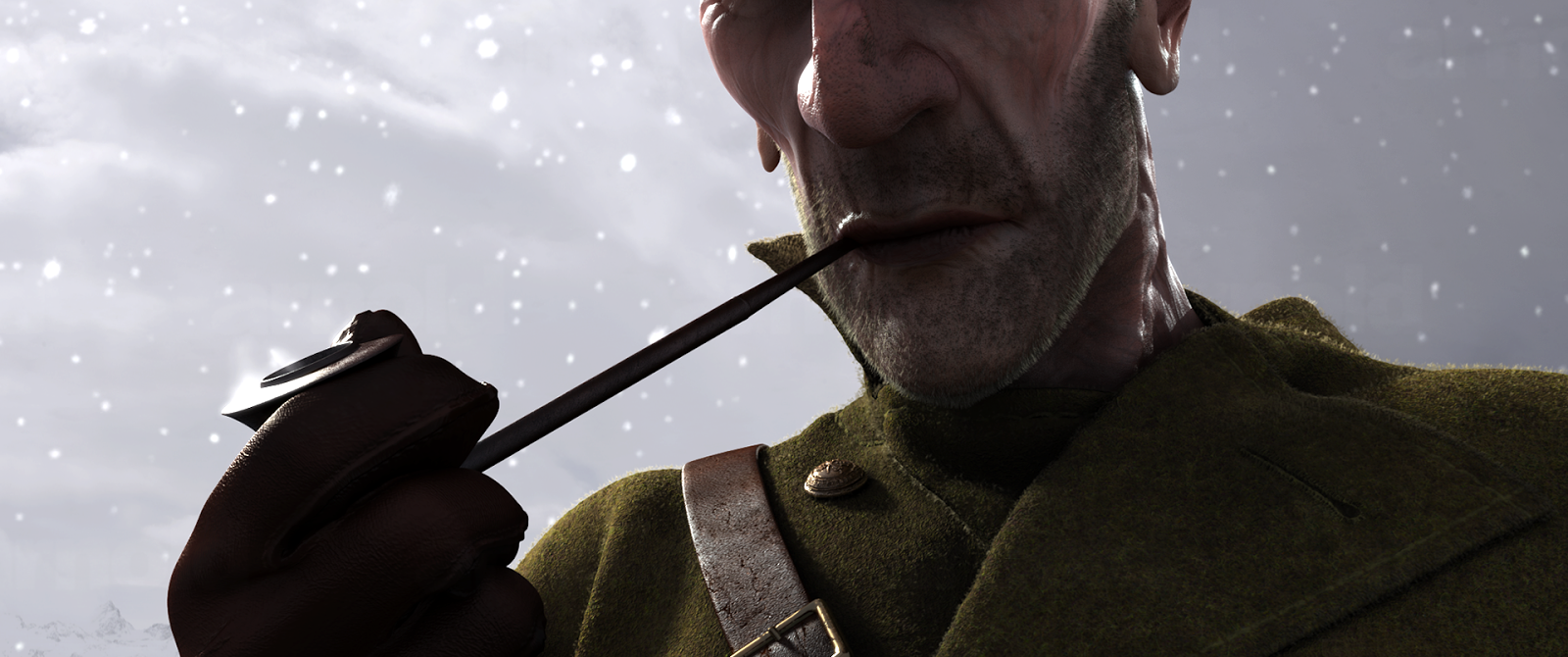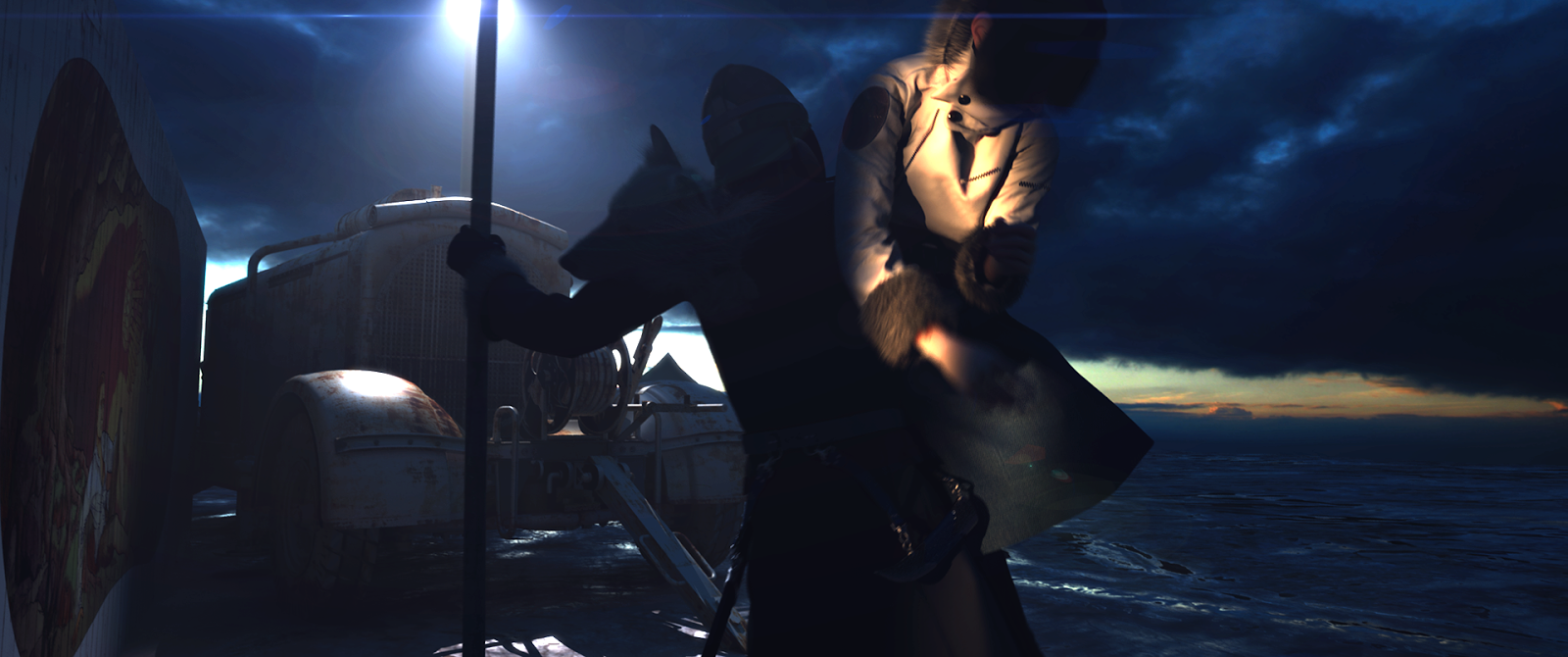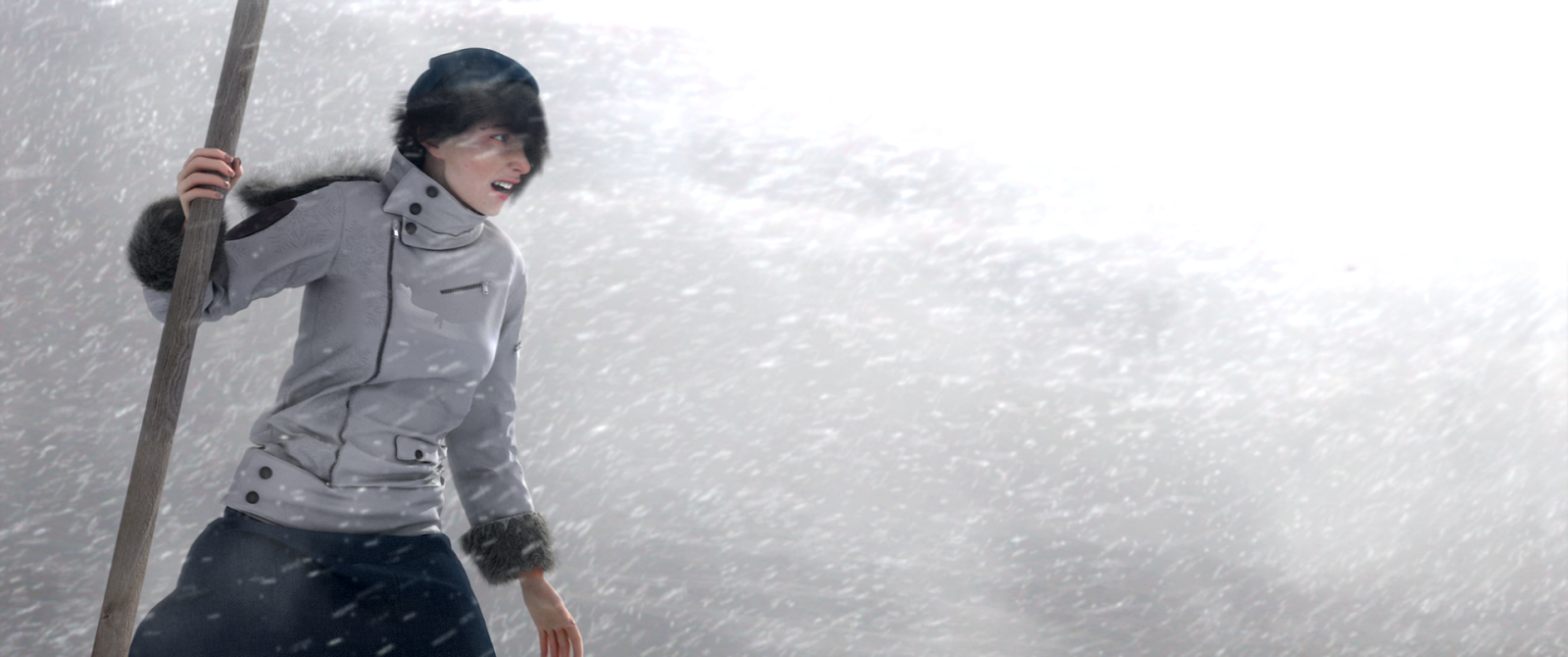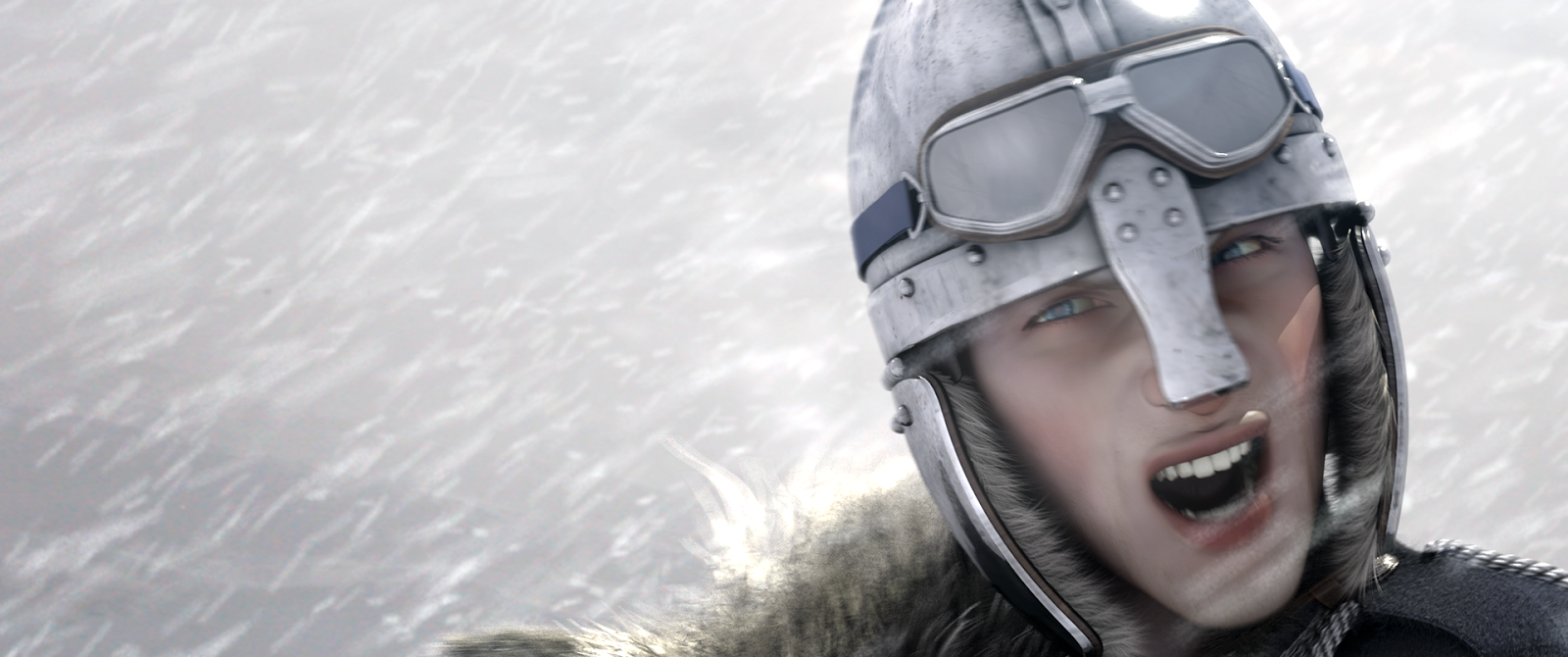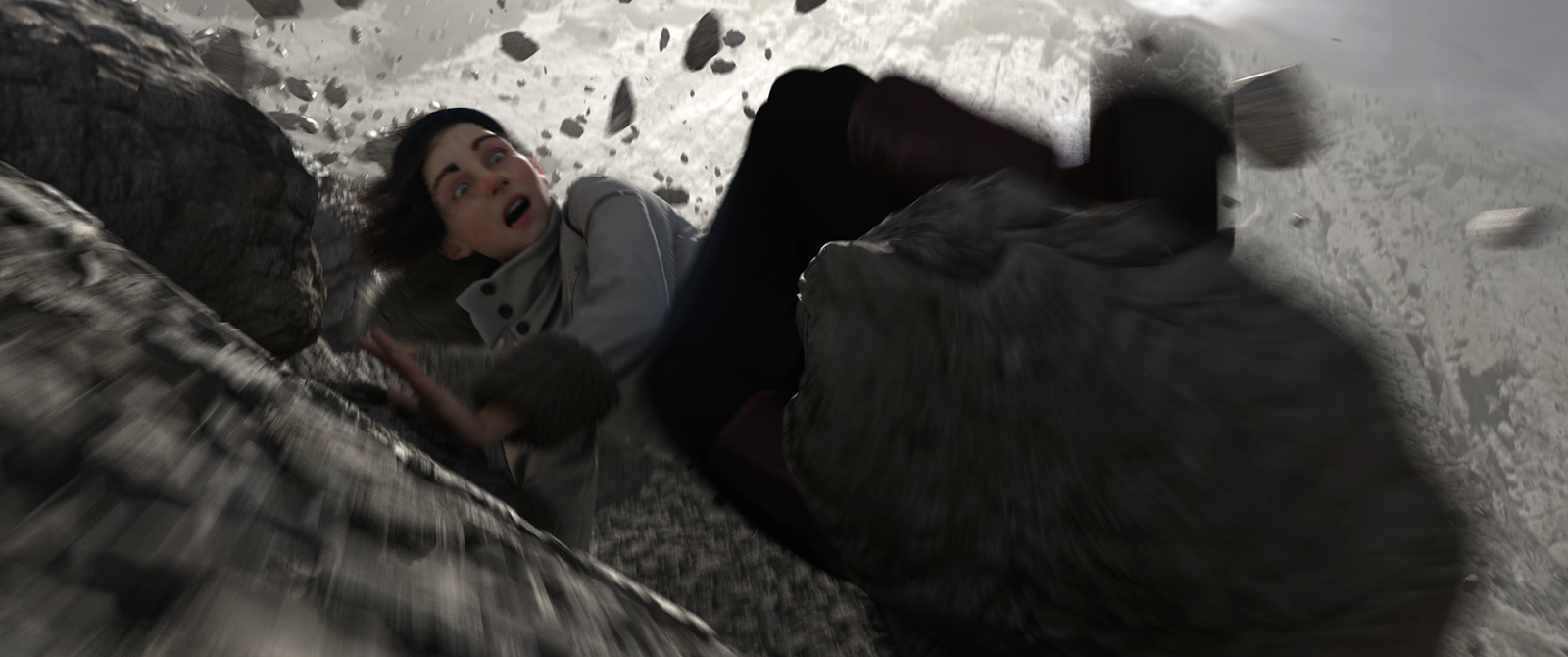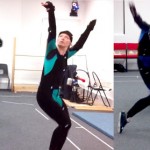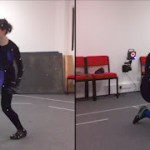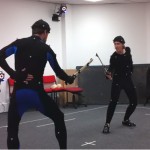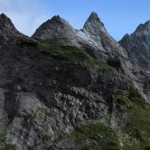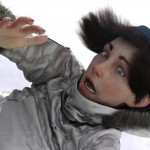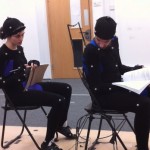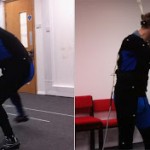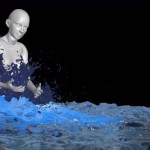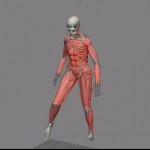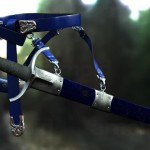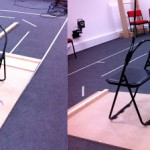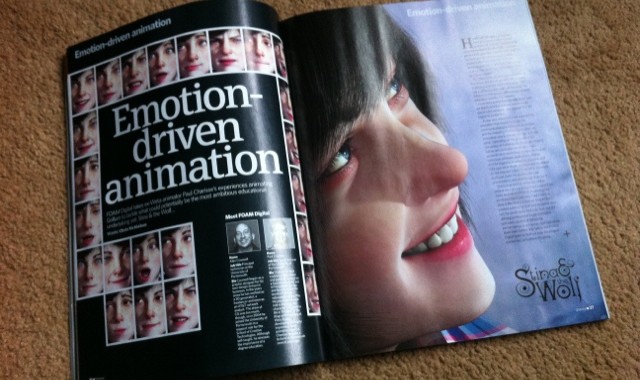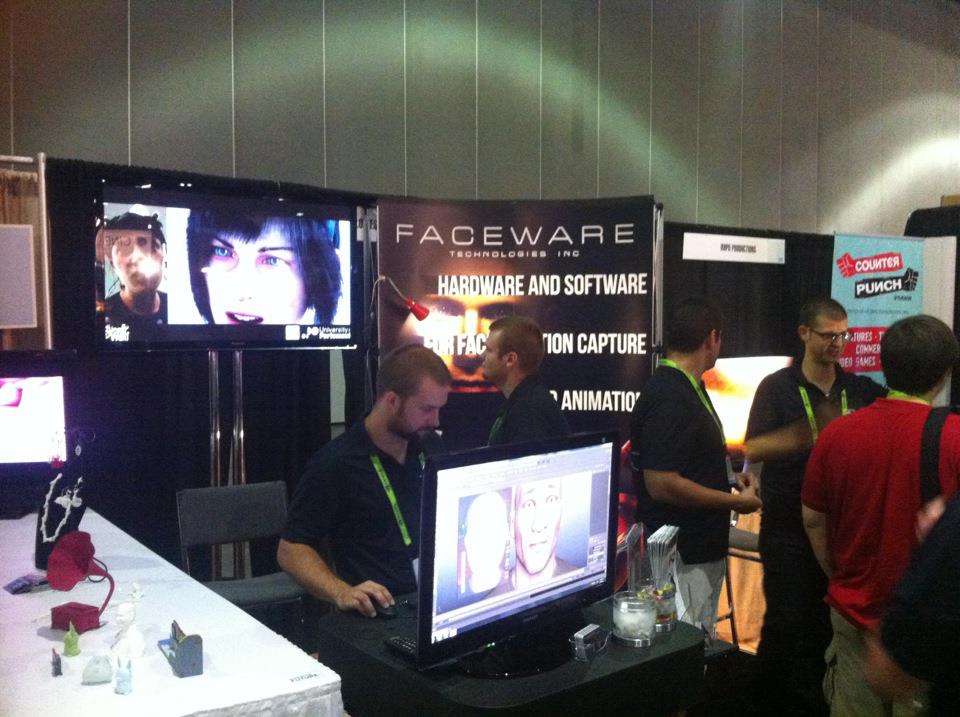Author Archive: Paul Charisse
Original Story and Music
As we’re still finishing up the last few shots of the trailer, i thought i’d add a little bit from our composer Pasha Curseli about the musical background to the project and how it formed the original story to our film:
It was the track below that started things off 4 years ago. It was written during the winter of 2010, whilst looking out of my window as the snow settled and slowly transformed my home town of Tsetsveki into a world of brilliant white roads and soundless streets. I wanted to capture the feeling it conjured up, the way snow seems to transport you to another world.
The result still conjures up images of that particular Winter for me, even if it does sound a bit like a Zelda level from the early 90s:
I then decided to re-orchestrate it, to give it a more classical feel:
I’m glad i bothered to develop it (partly spurred on by some comments i got about how 80s the original orchestrations sounded!) as it formed the first piece in the original “Stina and the Wolf” story; I imagined Stina wandering off and getting lost in the snow as she’s bewitched by it, having never witnessed anything like it before. As a result I decided to attempt a piece of “Peter and the Wolf” style narrative music, but taking the audience on a darker and more mythic journey. I wanted the main character to travel through different landscapes on a symbolic quest, in a similar way to characters in Angela Carter’s book of short stories: “The Bloody Chamber” in which she re-imagines popular fairy-tales into new, strange and often dark feminist myths of childhood transformations into adulthood.
The Original Story
The original tale comes from the first completed draft of the music and describes Stina’s story as she leaves her village and goes on a journey of transformation from human to wolf and from child to adult. A lot of it has changed since, as it’s evolved into a fully fledged screen play with fleshed out characters, plot and motivations. But many of the original ideas still pop up in the film in various forms. It’s unlikely that all of this music will remain in the final movie, as it will need to be scored specifically for the drama, but below is the story in its original form, with accompanying music.
Her signature melody and main instrument is an oboe and develops, intertwines is eventually replaced by the wolf’s instrument, a muted trumpet which develops through a series of hunting calls. Her imaginative life is represented by a harp, the devil she meets in the underworld is a flute and the village and it’s traditions are represented by a guitarviol (a crossbreed between a guitar and a viol that sounds a lot like a medieval viola-da-gamba):
Stina & the Wolf (The original story and music)
1 – The Village
Stina lives in a small village high in the mountains. It is a place of tradition and ceremony. It’s stifling and oppressive. She is doing her chores. They seem to never end. She looks out of the window towards the distant snowy mountains. She watches an eagle as it soars in a giant arc above the highest peaks, disappearing into a cloud and leading her into a daydream of a better life. (A harp replaces the regemented guitarviols of the village, as her imaginative life awakens.)
She’s brought back to earth as her aunt scolds her.
2 – The Snow
The next morning she wakes to a glorious sunny day. She creeps out into the wild meadows accompanied by her trusty dog Griot: a cunning plan to escape her chores. It suddenly begins to snow. She has never seen snow before. It’s a new and exhilarating sensation. She runs into the blizzard, but is soon lost, although she doesn’t know it yet.
3 – The Caravan
4 – The Baiting
5 – Transformation
Losing the caravan deep in the forest, she stops to rest by an icy lake. Lost and alone, she imagines the comfort and safety of her village, (The guitarviol melody is now reprised by the softer harp as she yearns for home.) Suddenly the moon appears. She fails to notice as it slowly turns blood red. She sees her reflection in the ice. She is transforming. On the far side of the lake a creature howls. She is surrounded by a pack of hungry winter wolves. As the light of the blood moon engulfs her, she becomes a wolf. She is hungry and joyful. She dives into the forest to feed with the pack. She follows as they tear through the trees, finally diving into the ground, sated, to rest under a giant tree.
6 – The Underworld
Stina wakes. She is underground. She is trapped. She makes her way down into the earth and into the underworld. She comes to a giant ocean. A lone wolf stands guard on a rock and calls to her (muted trumpet), saying she cannot enter. She answers (oboe). She persuades him to let her pass. He summons up the horde from beneath the waves. All the strange and fantastical creatures of the forest emerge and process down into the depths. They carry her down to the lair of the charming devil. She arrives through a giant wall of water (gong).
The lair is dark and empty. Suddenly the devil emerges. He sarcastically reprises Stina’s melody (flute). She replies softly (oboe) and they dance. Their melodies intertwine. He resists at first, but she soon teaches him to dance like her, and they move in harmony. Softened by the dance, he releases the boys and they escape into the wall of water. The horde carries them all back to the surface, traveling through all the levels of the underworld. Finally they burst into the brilliant mountain sunlight next to the village.
7 – Home
The village is full of snow and the villagers are gone. In their place are wolves (the original village guitarviol melodies are now played by trumpets) They are eating viscera and staining the white snow red. With her new found skills from the underworld, Stina casts a spell and returns the villagers to their human form and the boys reunite with their families (harp). She calls out to them, but her voice is now that of a wolf, and they throw stones. She watches the villagers going about their lives, only able to look in from the outside. She knows she can never go back. She has changed into something new. Her wolf form (trumpet) is now joined to her human form (oboe). She turns from the village, and runs into the mountains.
A new life awaits with the beasts of the forest.
~ The End ~
3 shots left and SIGGRAPH news
Here’s the latest from the Stina front line. Only 3 shots left and the trailer’s officially done. We’ve left the most challenging shots to last, of course. One has a mammoth 26 characters that all need cloth, hair, moustaches and face and hand animation. All the motion capture is now in and looks great (thanks go to recent graduate Krisztián Kinder for lining all this up); It’s now all lit with composite tests done and we’re very happy with what’s turning out to be our most ambitious shot to date. We’re also delighted to have got the rendering times down from 24 hours a frame to something slightly more manageable! Another equally ambitious shot involves us simulating an ocean wave colliding with Stina’s dress as it creates a plume of spray, all back-lit by a sunset. This shot is being helped a lot by the new open VDB toolkit (Fast and good quality volumetric rendering) available in Arnold, on to the soon to be retired (don’t get me started) Softimage XSI. It’s all new and relatively tricky stuff for us (tech babble: particularly tricky has been trying to get vector motion blur to work with our Open VDB renders), but we’re still on target to get it all done by the end of May for our London show.
In other exciting news, we have been accepted to give a talk at Siggraph 2014 in Vancouver, and Alex and I will be heading out to perform our familiar double act. Please come along if you’re attending. We will be focusing mainly on the educational angles of the project, giving an insight into the students experience, but will also be premiering the new trailer and showing some new behind the scenes breakdowns, hopefully on a posh projector (a chance to justify our 2k resolution)
We are also continuing to progress with the short film sequence that will accompany the trailer. This won’t be ready until after the summer, but has now been storyboarded by our storyboard artists Chavdar Yordanov and most of the assets are built and ready to be assembled into the scene. This includes some cool new dynamic scatter ICE tools we’ve made for grass and trees (thanks to 3rd year programming wiz Scott Richards here), plus a fantastic new muscle system built by 3rd year student Tom Goodchild. We also have our second full time hire for FOAM Digital: Freya M Spencer, another talented 3rd year student who will be joining us as a character animator for 4 months to flesh out the new sequence. She’s already completed some very polished animation, but it will all be kept tightly under wraps until in the final edit. We are still debating whether to show the sequence publicly or not, or leave it for investors only, as it does contain some film spoilers. The sequence has also given us an excuse to use the wonderfully rich and characterful voice of Martin Daniels, who plays the “Pipe Catcher” character:
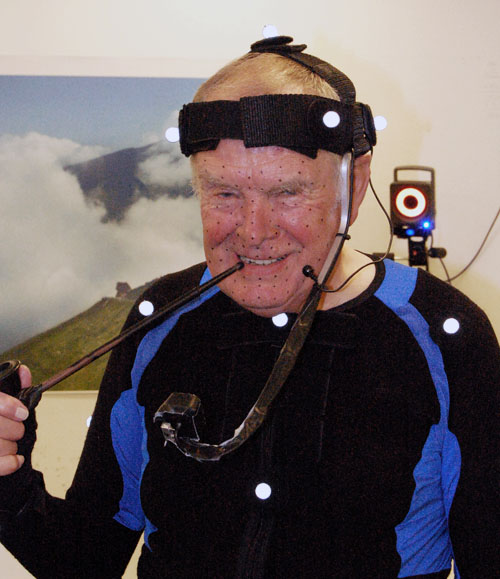
The next report will be in June, when we’ve completed the trailer.
Paul
Trailer progress and Awards
Over the last few months we’ve been edging closer to our goal of a finished trailer. We are now well over half way to rendering and compositing all of the 52 shots and have finished the majority of the animation and cloth stages. It’s been slow going to keep our quality levels where we want them, but we are getting very excited about how it’s all finally turning out. We’re on target to get it finished by the summer, in time for our London show, a bit later than the February deadline we had originally planned for, but the loss of a few key staff to the bright lights of Soho (thanks to James Skilbeck for all his hard work on our cloth here) and the demands of our university day jobs (staff) and coursework (students) have slowed production a little. Just to make our life easier, we have also decided to run a separate project in parallel, featuring a key a scene from film that introduces one of the main characters, Griot. More details on this in later posts, but we hope to have this ready by the summer as well. It will form a key part of our “film pack” that will go out to potential investors, along with a book of storyboards and the 2k version of the trailer. We also hope to take this scene around the short film festival circuit, if all goes well.
We also have production designer and storyboard artist Chavadar Yordinov back on staff as of this week, and he is working hard to complete our storyboards.
His skills will allow us to develop a full set of artwork that can be developed into a graphic novel, in addition to helping us with the previz layout and final editing (He is also redrawing some of my earlier, and some what sketchier story boards!)
In other news, we were delighted to be awarded the Prize for Innovation in the 6th “Snow Wolf” Cup animation competition at the 4th Northeast Asian Culture and Art Week held in China for the test shot we did last year. We competed against over a thousand entrants from around the world and were very surprised to find out that we’d won! Next stop the Palme d’Or 😉
Paul
Softimage Creatives
We’ve been slowly ramping up for the new term over the last few weeks, reorganising a few things in the structure of Foam. We are attempting to make our shots run more efficiently by combining a few departments and dividing up the huge world into more focused CG sets that we can use at an earlier stage in the pipeline. Our plan is to get as much lighting and texture detail in as early as we can, so we have a clearer idea how to compose the final shots.The process of making the trailer has made it clear that we need a lot more colour, texture and lighting information early on to tackle the cinematography in a way that we can be confident it will look good at render time. For the trailer we have had to revise a lot of shots after render, due to compositions not quite working when all the lighting and texture information is assembled. This early design process we are calling “post viz” and will involve the motion capture being brought into a low resolution model with the facial performance projected onto the character heads. (we are calling these “egg head” rigs. You’ll see why in the attached video) We are combining these with a highly textured set, which we will light to a level that gives us a good representation of the final render. Hopefully this will allow us to put together early edits that will give us a much stronger sense of how the finished scenes will look.
In other news: We were kindly invited to present the project to a group of industry professionals at the annual Softimage Creatives meeting in London (Thanks Andy) . It was a great opportunity to get some industry feedback and was good to put our work in a broader context. We got a lot of useful tips, as well as providing a few of our own, which was a nice surprise. Our weakest link at the moment was clearly our compositing pipeline, which we are addressing at the moment. (with additional help from some ex students who are now experienced pros: thanks To Luke Armstrong here)
We also now have the first full time paid staff member of Foam Digital: James Skilbeck, a student who graduated last year and was running our Production and Cloth departments. Thanks also to a few other recent graduates who have been helping out on the trailer in their spare time: Tom Lee for Animation and Owyn Abram for VFX. I’ll leave you with a video of our London presentation with Myself, Alex and James giving a breakdown of our project so far and a sneak preview of our trailer work-in-progress.
Trailer Show at MPC
Over the last few months we’ve been working hard to finish our trailer. A small core of about 10 of our best have been beavering away trying to compete the 52 shots crammed into our one and half minute snapshot of the film. With so many ambitious shots and such a huge variety of characters, sets and atmospheres, we realised early on that we weren’t going to hit our original deadline of June 21st. We planned to show it to assorted industry people at MPC in London as part of the end of year BA animation show. Instead we decided to show as much as we could complete of the trailer and VFX breakdowns as a “work in progress”, rather than a finished piece. In the end we got all of the animation completed and about half of the cloth done, with around 7 shots rendered and comped to a finished level. We still had a completed trailer that delivered all of the acting and narrative beats, and the shots that were finished looked great in the MPC screening room, particularly at our chosen 2k resolution. This made it all feel very cinematic. It was very exciting to see our work projected at its native resolution on a cinema screen, where it belongs. Also the addition of some fantastic sound design by one of our graduates Chris Popiel really bought it all to life. A few bits still required some imagination; we made all the non-completed work black and white to distinguish it from the completed shots. But it still managed, to quote one member of the audience, “..make the hairs go up on the back of my neck..” Which was very gratifying. The students worked extremely hard and given the size of our team, what we showed was a lot more than I expected we’d be able to produce in the time. Sadly a lot of the team have now left, as they have now graduated, but hopefully the experience and work they’ve produced will give them a head start in industry. Luckily we still have some very talented artists set to do another year with us. The present deadline for completing the trailer has now been shifted to Christmas, as we have a reduced team, but the majority of the shots just need lighting (apart from a few massive VFX heavy shots!) I’ve posted up a few of the finished frames here. Watch this space for the full animated trailer coming soon.
Pickups and Trailer Work
Paul
- Dancing
- “Dancing”
- RC Annie Militia
- Story Mountain (Clifford Phillips)
- Stina’s New Coat
- Becky and Dave on the Bus Set
- RC Annie Militia
- Realflow Water Simulation Test (Alex Counsell)
- Muscle System (Tom Goodchild)
- Militia Sword Belt (Razvan Arventiev, Clause Harpis, Tautvydas Katkevicius)
- Man With Drill
3D Artist and New Funding
Paul
SIGGRAPH – 2012
A quick report from Siggraph, now I’m finally over the jet lag. Much to our surprise we went straight into a press interview on arrival at the conference and conducted a fair few more over the following days with assorted Internet and paper based press. All thanks to our gracious hosts FACEWARE, who’s booth we spent a large proportion of the conference at. We were very excited to see our test shot playing on their booth on arrival (pics below) , particularly as we hadn’t planned to attend Sigraph until next year. We spent a few hours each day wandering around the show seeing what tasty software morsels we could add to to our ever growing shopping list. It was great seeing what’s out there at the moment and chatting to people about new methods and software that could benefit our ambitious pipeline. And we came away with quite a shopping list of new toys for the production. Having a project such as ours in full swing helped a lot, as we were able to engage on a production level and go straight to the nuts and bolts of production problems and requirements, rather than simply being a university asking for freebies. Alex managed to secure quite a few potential new sponsors, proving himself time and time again to be a honed conference panther.
Our First Shot
The team who worked on it comprised of representatives from all of our departments, some of whom unfortunately didn’t get to show their work at the show; some shots were cut due to assorted software and hardware issues (VUE, you’re on your last warning) The teams worked incredibly hard, often having to deal with completely new methods and software on their own, as Alex and i were swamped with managing the pipeline. Particularly towards the end of the 4 weeks, as the deadline loomed, they worked fantastically under pressure and left most of the swearing to me and Alex, well mostly to Alex.
We were all very proud of the result and the majority of feedback we received was very complementary. Many of the industry people were surprised we could produce work of such quality in such a short amount of time, the cloth particularly drew a lot of attention. The lack of context of the shot created a few problems, as a few people found the edit confusing, as much of what was contained obviously had no precedent and forms part of a much longer scene. As a result our next release will be a stand-alone trailer that’s a bit easier to digest.
Thanks go to all our sponsors for the software we used on this shot, particularly to FACEWARE, who’s software allowed us to complete 4 minutes of high quality facial animation with only a handful of junior animators and 1 senior animator in 4 weeks. So here is the clip in question.
We still have some distance to travel before the look is completely what we want. Gunter is in need of a facelift and we didn’t get time to do any atmospherics etc. We plan to use this shot as a testbed for new systems and techniques. Watch this space for updated versions to see how we’re getting along. Here’s a concept of what we’re aiming for in the next pass:
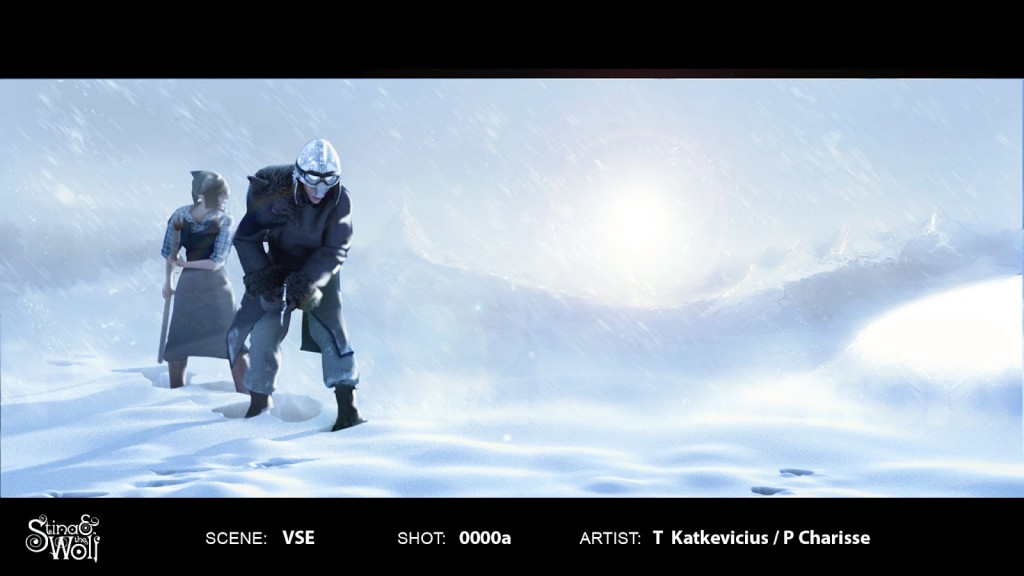 In further news, we now have Solid Angle on board as a partner, which we’re very excited about as we used their incredible ARNOLD rendering software for the demo shot (it’s only a beta version, hence the word ARNOLD on every shot, but full versions are on there way) and are optimistic that the University has now decided to use this renderer as a core package. This will allow us to have an in-house render farm which should make rendering the whole film to the quality levels of the demo shot and beyond within our reach. For the demo shot we were also incredibly fortunate, as the University had just purchased 25 Alienware super-power gaming computers that needed a home until they could be properly installed; We gave them a home, for 4 weeks, and made sure they were thoroughly bedded in :).
In further news, we now have Solid Angle on board as a partner, which we’re very excited about as we used their incredible ARNOLD rendering software for the demo shot (it’s only a beta version, hence the word ARNOLD on every shot, but full versions are on there way) and are optimistic that the University has now decided to use this renderer as a core package. This will allow us to have an in-house render farm which should make rendering the whole film to the quality levels of the demo shot and beyond within our reach. For the demo shot we were also incredibly fortunate, as the University had just purchased 25 Alienware super-power gaming computers that needed a home until they could be properly installed; We gave them a home, for 4 weeks, and made sure they were thoroughly bedded in :).

